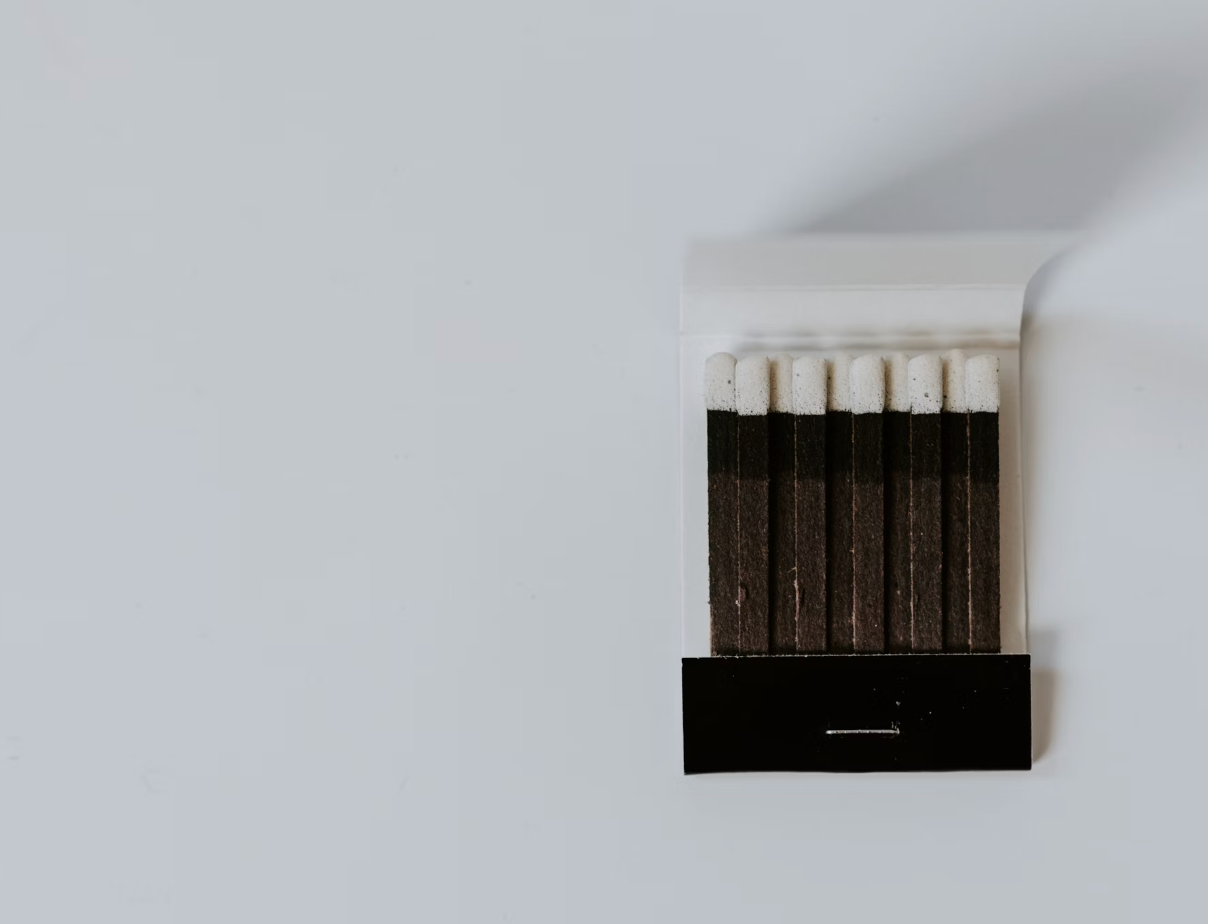When it comes to igniting a flame, matchbooks and matchboxes have been iconic tools for over a century. Though they serve the same primary purpose, their design, functionality, and cultural significance set them apart. If you’ve ever wondered about the differences between these two everyday objects, this guide will illuminate their unique characteristics and histories.
What is a Matchbook?
A matchbook is a small cardboard container designed to hold matches. It typically consists of a folded piece of cardboard with an attached strip of striking material on the outside. Inside, you’ll find matches secured in rows, often stapled or glued at the base.
Key Features of Matchbooks:
-
Material: Made of lightweight cardboard, making them portable and disposable.
-
Size: Compact, often small enough to fit in a pocket.
-
Striking Surface: Located on the outside of the flap for convenience.
-
Design: Matchbooks often feature advertising or promotional designs, making them popular marketing tools.
-
Matches: Usually short, with a cardboard stick tipped with a flammable head.
What is a Matchbox?
A matchbox is a rectangular container, usually made of cardboard or wood, designed to store wooden stick matches. Matchboxes come with a sliding tray and a striking strip on one or both sides of the outer casing.
Key Features of Matchboxes:
-
Material: Typically sturdier than matchbooks, often crafted from cardboard or thin wood.
-
Size: Larger and bulkier compared to matchbooks, providing more space for matches.
-
Striking Surface: Positioned on the side of the box for safety and convenience.
-
Design: Can include intricate designs or logos but are less commonly used for promotional purposes than matchbooks.
-
Matches: Typically longer wooden sticks, making them more durable and easier to use.
Historical Origins and Development
Matchbooks
Matchbooks were invented in the late 19th century by Joshua Pusey, who patented the idea in 1892. Their compact design quickly made them a favorite for personal use and advertising. The Diamond Match Company later acquired Pusey’s patent and refined the matchbook’s design to ensure safety and reliability.
Matchbooks gained massive popularity in the early 20th century as businesses discovered their potential as marketing tools. Restaurants, bars, and hotels frequently distributed customized matchbooks with their logos and contact information.
Matchboxes
The origins of matchboxes trace back further, as early as the 1830s, when friction matches were first introduced. Early matchboxes were handmade and often crafted from wood, making them more durable but less portable than modern versions. Over time, manufacturers shifted to using cardboard for cost-effectiveness and convenience.
Matchboxes became the go-to choice for home use, offering a larger supply of matches that were better suited for tasks like lighting stoves, candles, or fireplaces.
Differences in Design and Functionality
1. Material and Durability
-
Matchbooks: Made of lightweight cardboard, matchbooks are less durable and primarily designed for short-term use. Their compactness makes them ideal for carrying in a pocket or bag.
-
Matchboxes: Often made from thicker cardboard or wood, matchboxes are sturdier and designed for long-term storage. They can protect matches from moisture and physical damage more effectively than matchbooks.
2. Match Size and Quantity
-
Matchbooks: Contain shorter matches, usually numbering between 20 and 30. These matches are best suited for quick tasks like lighting a cigarette.
-
Matchboxes: Contain longer matches, often numbering 50 or more. These matches are better for tasks requiring a steady flame, such as lighting a fireplace or BBQ grill.
3. Striking Surface Placement
-
Matchbooks: The striking surface is on the outer flap, making it easy to ignite a match quickly but potentially less safe if carried loosely.
-
Matchboxes: The striking strip is on the side of the box, reducing accidental ignition and making it safer for storage.
4. Aesthetic Appeal and Usage
-
Matchbooks: Known for their advertising appeal, matchbooks often feature colorful designs, slogans, and contact details. They have become collector’s items for their historical and artistic value.
-
Matchboxes: Typically more understated, matchboxes focus on practicality. However, some luxury brands and artisan producers create decorative matchboxes with intricate designs.
Cultural and Practical Applications
Matchbooks in Popular Culture
Matchbooks have played a significant role in advertising history. From the 1920s to the 1960s, they were ubiquitous promotional tools. Businesses like diners, motels, and even political campaigns distributed branded matchbooks to spread their messages.
Collectors, known as phillumenists, prize vintage matchbooks for their historical and aesthetic value. These tiny artifacts often capture the essence of a bygone era, making them a unique form of memorabilia.
Matchboxes in Daily Life
Matchboxes have remained a staple in households for practical purposes. They are particularly useful for activities requiring a steady flame, such as lighting candles, incense, or camping fires. Their durability and capacity make them more suitable for outdoor use and emergency kits.
Advantages and Disadvantages
Matchbooks
Advantages:
-
Compact and portable
-
Affordable to produce
-
Effective marketing tools
Disadvantages:
-
Less durable
-
Shorter match length limits usability
-
More prone to accidental ignition
Matchboxes
Advantages:
-
Durable and long-lasting
-
Larger and more versatile matches
-
Safer storage and transportation
Disadvantages:
-
Bulkier than matchbooks
-
Less effective for advertising purposes
Environmental Considerations
As society becomes more environmentally conscious, the materials and manufacturing processes of matchbooks and matchboxes are coming under scrutiny. Matchboxes, often made from renewable wood or recycled cardboard, are generally considered more eco-friendly than matchbooks, which use disposable cardboard and additional adhesives.
Some manufacturers are exploring biodegradable and sustainably sourced materials for both matchbooks and matchboxes to reduce their environmental impact.
While both matchbooks and matchboxes are designed to ignite a flame, their differences in design, functionality, and cultural significance set them apart. Matchbooks are lightweight, promotional tools perfect for short-term use, whereas matchboxes offer durability and practicality for home and outdoor applications. Whether you’re a collector, a camper, or someone seeking an eco-friendly fire-starting solution, understanding the unique qualities of each can help you choose the right option for your needs.
Next time you light a match, take a moment to appreciate the ingenuity behind these everyday objects and their fascinating history and check out Matchbox City Prints. Whether you reach for a matchbook or a matchbox, you’re holding a piece of functional design that has stood the test of time.

